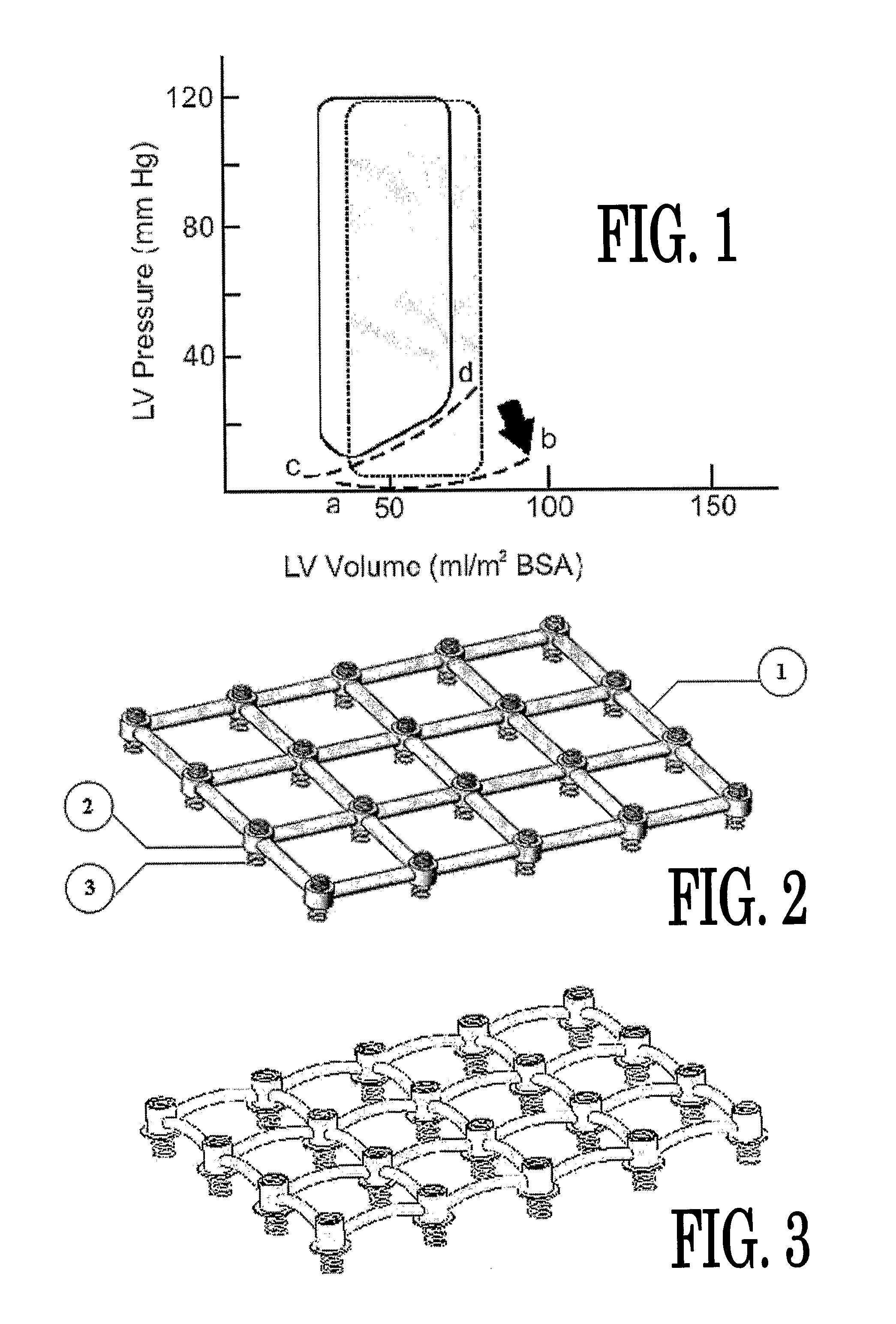In Vivo Device for Assisting and Improving Diastolic Ventricular Function
a diastolic ventricular function and in vivo technology, applied in the field of in vivo devices for improving diastolic ventricular function, can solve the problems of increased modulus of chamber stiffness, affecting diastolic function, and congestive heart failur
- Summary
- Abstract
- Description
- Claims
- Application Information
AI Technical Summary
Benefits of technology
Problems solved by technology
Method used
Image
Examples
example
In Vivo Demonstration of the Implantation and Use of the Device of the Present Invention in a Mammalian Subject
Methods
[0123] Note: All animals in the study received humane care in compliance with the Public Health Service Policy on Humane Care and Use of Laboratory Animals, prepared by the office of laboratory animal welfare—National Institute of Health, amended August 2002.
Anesthesia and Instrumentation:
[0124] A healthy sheep, (12 month, 40 Kg) was anesthetized as follows: [0125] 1. Induction: I. M Ketamine 5 mg / kg & Xlyazine 0.25 mg / kg. [0126] 2. Intubation and artificial ventilation. [0127] 3. Maintenance of anesthesia by Isoflurane(0.5%-2.5%) [0128] 4. Following intra-tracheal intubation, positive pressure mechanical ventilation was instituted using the above inhalants. [0129] 5. A peripheral vein was cannulated for crystalloid solution infusion to assist the maintenance of stable hemodynamics.
Test Procedure:
[0130] The following test procedure was then performed: [0131]...
PUM
 Login to View More
Login to View More Abstract
Description
Claims
Application Information
 Login to View More
Login to View More - R&D
- Intellectual Property
- Life Sciences
- Materials
- Tech Scout
- Unparalleled Data Quality
- Higher Quality Content
- 60% Fewer Hallucinations
Browse by: Latest US Patents, China's latest patents, Technical Efficacy Thesaurus, Application Domain, Technology Topic, Popular Technical Reports.
© 2025 PatSnap. All rights reserved.Legal|Privacy policy|Modern Slavery Act Transparency Statement|Sitemap|About US| Contact US: help@patsnap.com



